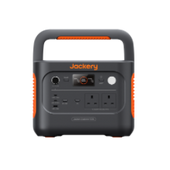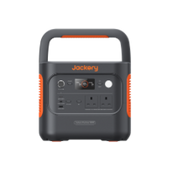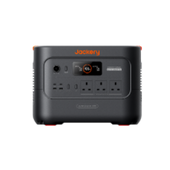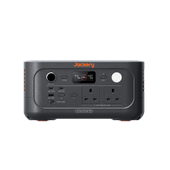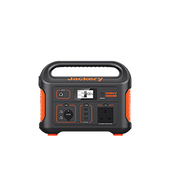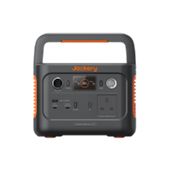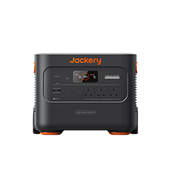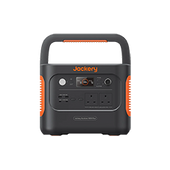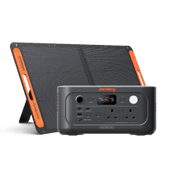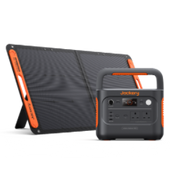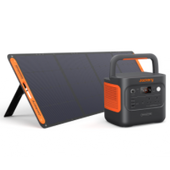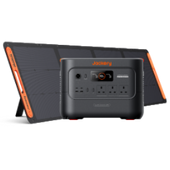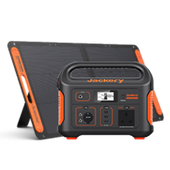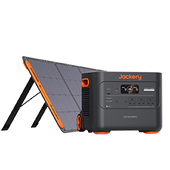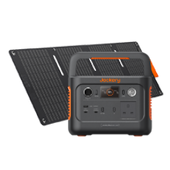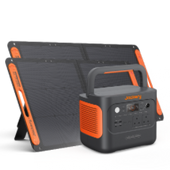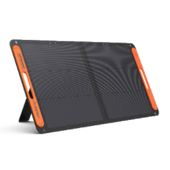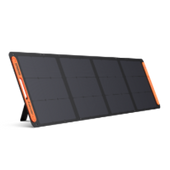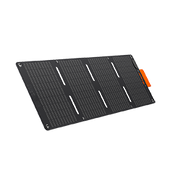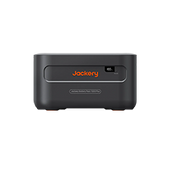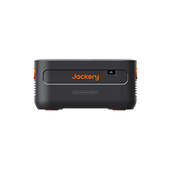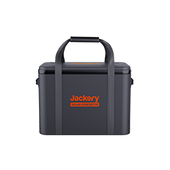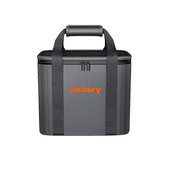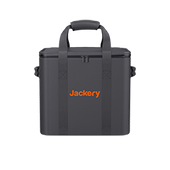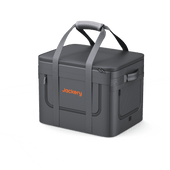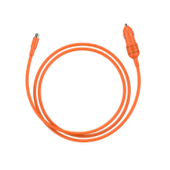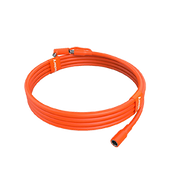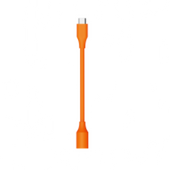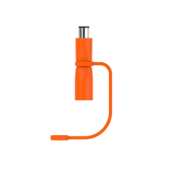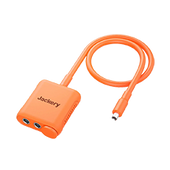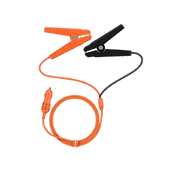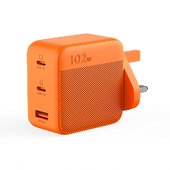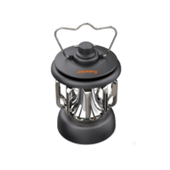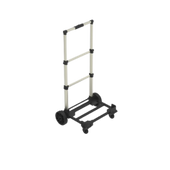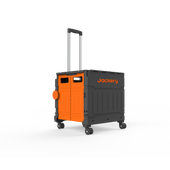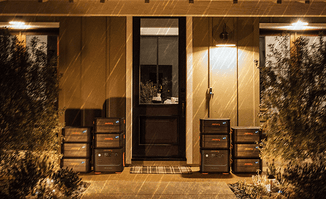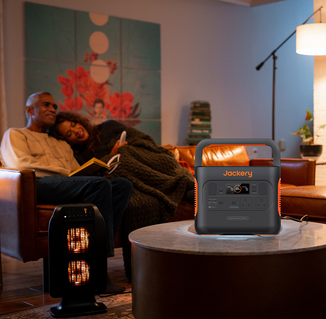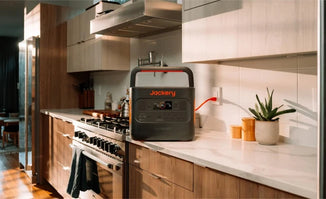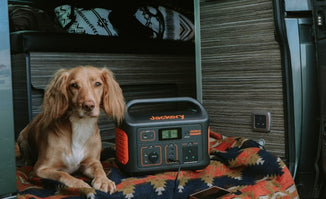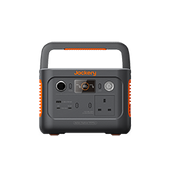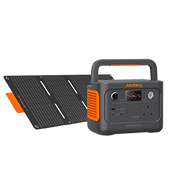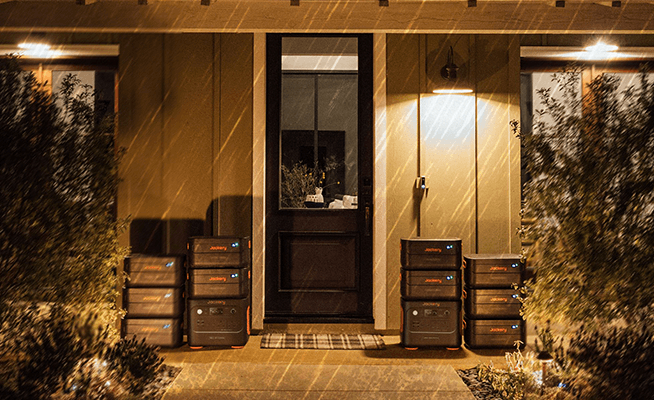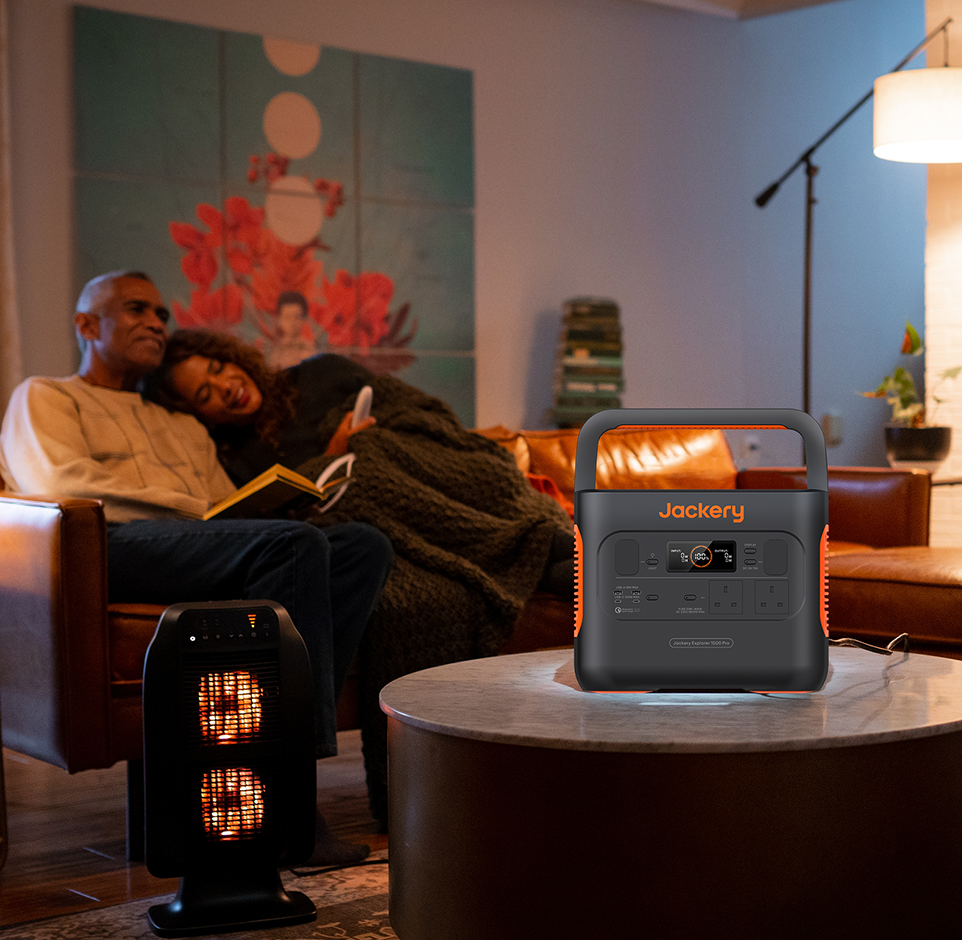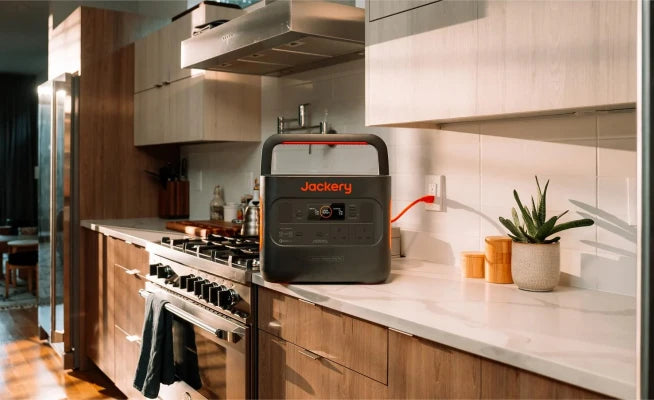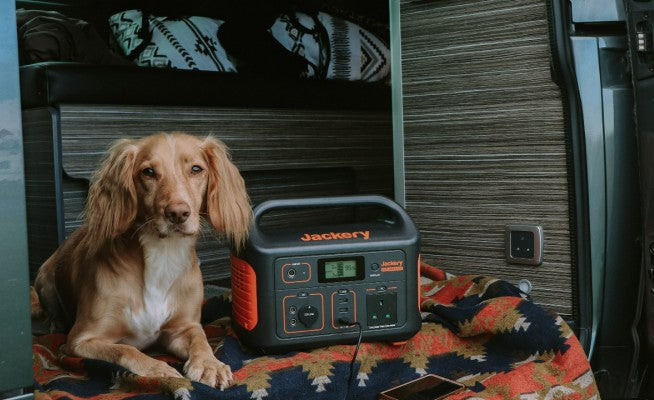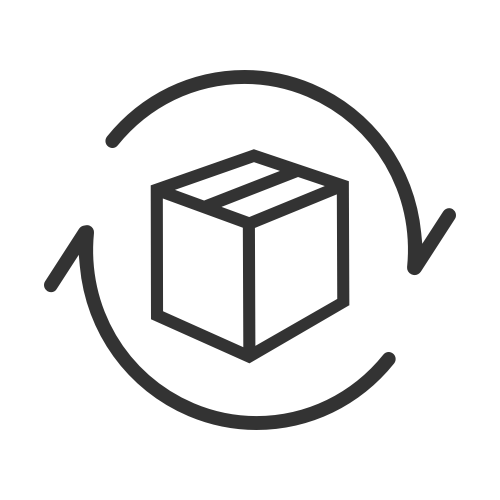Ultimate Guide to Pure Sine Wave Inverter
A secure and stable power source is vital in today's digital age, where we rely mainly on electronic devices and appliances. The pure sine wave inverter (also called a "true sine wave inverter") is an ideal solution for this problem. They are innovative power conversion devices that generate high-quality alternating current (AC) power while emulating utility company power's smooth and steady waveform.
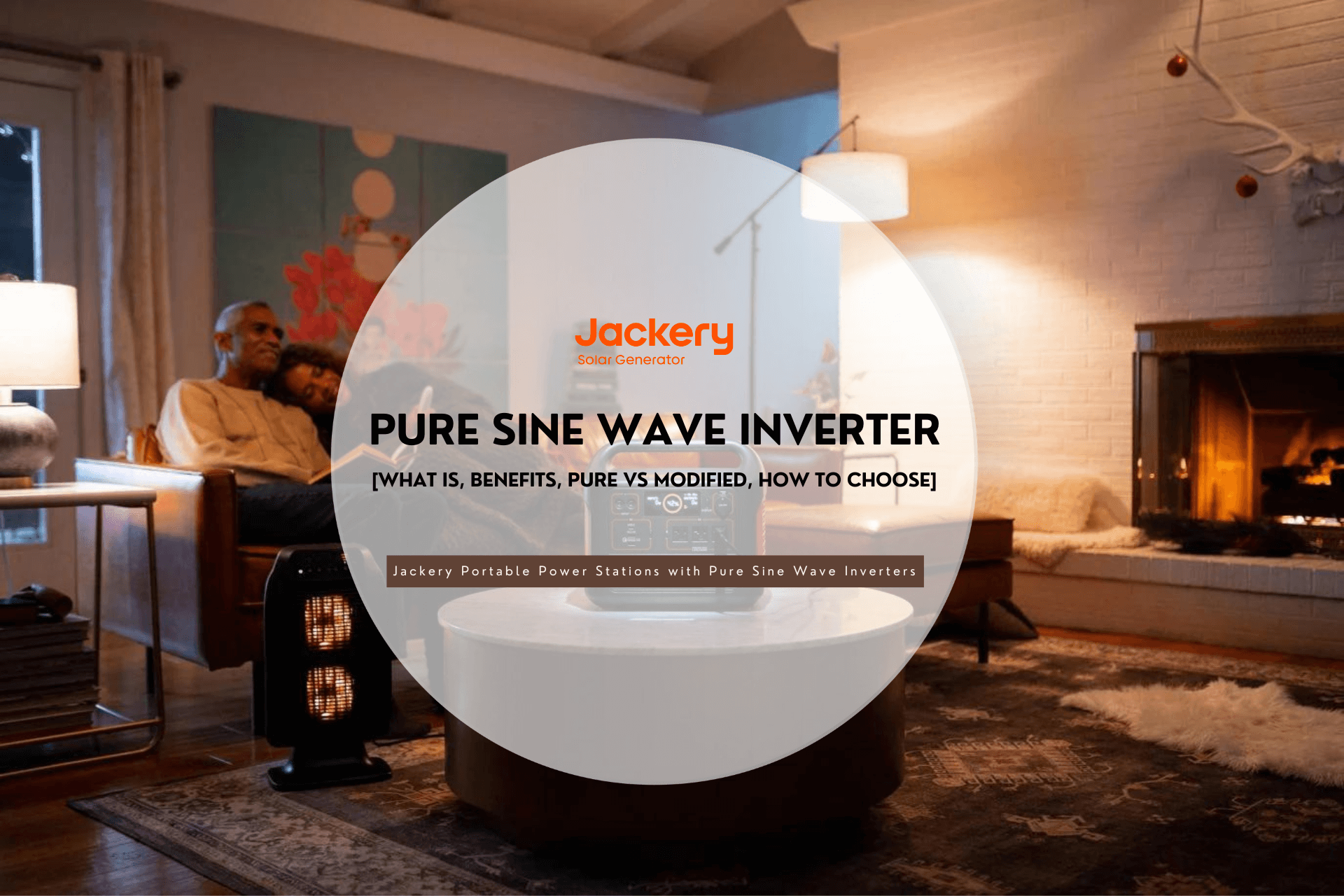
Solar inverters play an essential role in the functioning of solar installations. Inverters convert your solar panels' power and store it in your battery from DC to AC. You'll need an inverter to power the everyday appliances in your home, off-grid cabin, or RV.
From this page, you will learn everything about pure sine wave inverter, including what it is, its benefits, how it works, pure sine wave inverter vs. modified sine wave inverter, and how to choose one. An inverter is essential for harnessing solar power, and Jackery Portable Power Stations come with a pure sine wave inverter that ensures a continuous and smooth flow of electricity.
|
Products |
Images |
Capacity |
Rated / Peak Power |
Inverter |
Size |
|
Explorer 2000 Pro |
 |
2160Wh |
2200W Rated, 4400W Peak |
Pure Sine Wave |
15.1x10.5x12.1in |
|
Explorer 1000 Pro |
 |
1002Wh |
1000W Rated, 2000W Peak |
Pure Sine Wave |
13.39x10.32x10.06in |
What Is Pure Sine Wave Inverter?
Inverters act as a bridge between the photovoltaic system and the devices that draw energy from it. They convert your solar panels' direct current (DC) output to alternating current (AC), the standard all business appliances use.
A pure sine wave inverter generates AC sinusoidal signals that are smooth and stable. Its output quality is comparable to that of a standard wall outlet. Depending on the design and manufacturer of the machine, it can create more precise signals.

For delicate electronics, precision tools, audio processing circuits, and oscillating devices, clean and reliable alternating current is critical. Using a pure sine wave inverter ensures that your machines operate at the ideal power levels for which they were built and are safe from various power disturbances. A clean AC source also impacts measuring tool precision, sound output cleanliness, and power tool efficiency. It also extends the life of delicate circuits.
However, producing such smooth signals necessitates sophisticated designs, costly components, and lengthier assembly times. As a result, pure sine wave inverters are expensive and difficult to fix. Utilities can also generate sine waves.
As a result, if you're going to be connected to the grid, pure sine wave inverters are always required. Pure sine wave inverters are typically needed for sensitive equipment such as microwaves and refrigerators. Jackery Portable Power Stations use pure sine wave inverters to ensure a steady electrical supply and protect your appliances from overheating.
DC VS. AC Power
Direct current power is self-explanatory. The current only flows in one direction. In the context of solar cells, it is observed that the current exhibits gradual fluctuations over the day in response to variations in solar intensity. However, it is essential to note that the current consistently maintains a unidirectional flow.
AC power is distinct. The river travels in both directions, and its intensity varies fast. The curve generates a 'wave' when the current is plotted against time. AC power waves come in a variety of shapes and sizes. The type of wave that we use in our homes and companies is known as a "sine wave." The sine wave is depicted in the AC curve below.
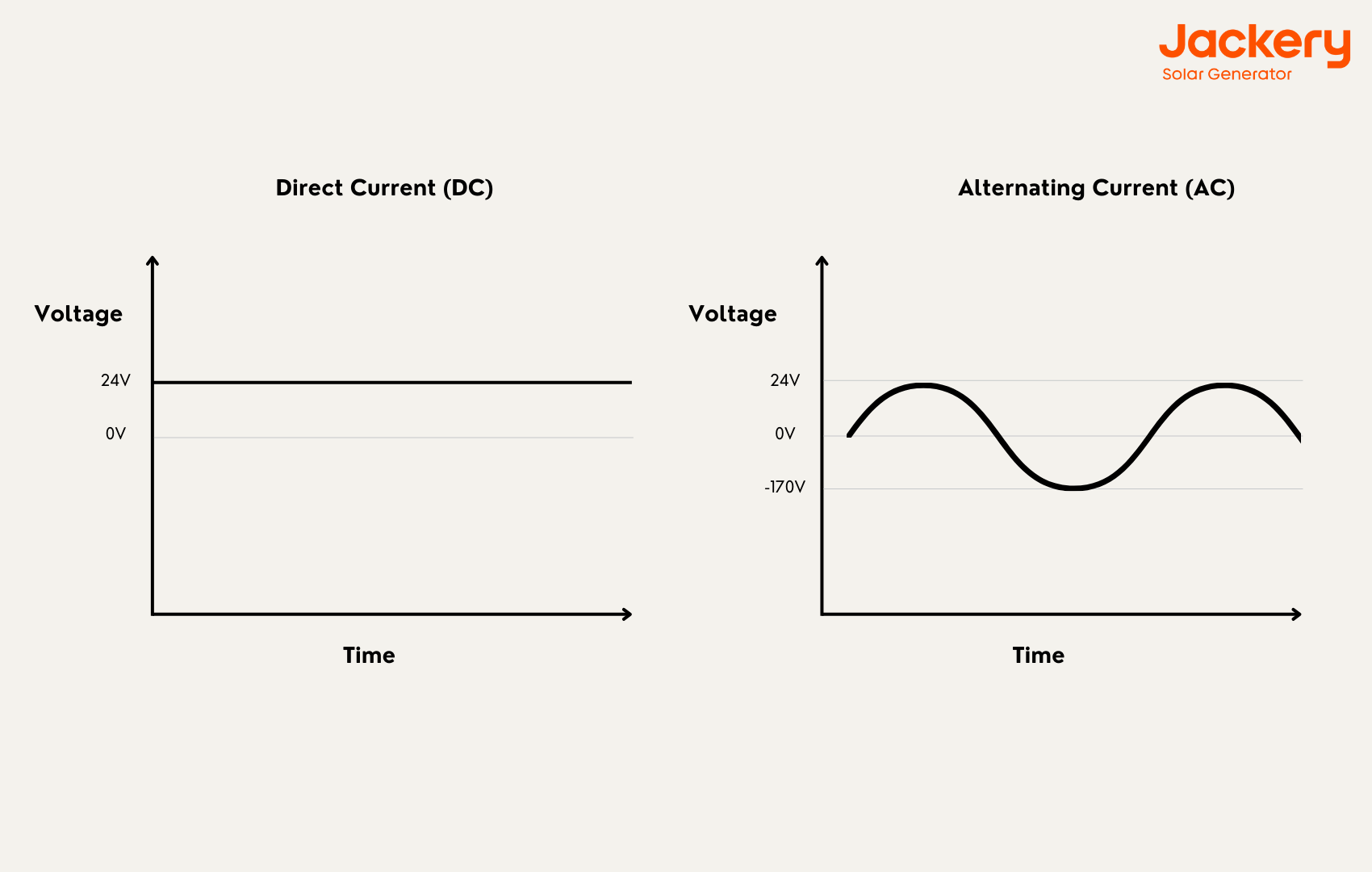
Electrical engineers developed an inverter that transforms DC to AC and AC to DC as needed to address the compatibility concerns between DC and AC. The pure sine wave inverter is a prime illustration of an electronic apparatus designed to convert DC into AC.
What Are The Benefits of Pure Sine Wave Inverter?
Pure sine wave inverters can generate cleaner, smoother, quieter, and more reliable energy, allowing appliances and gadgets to work without interference. Here are five reasons to use pure sine wave inverters for your home's solar system.
Minimal Harm for Appliances: The smooth waveform produced by a pure sine wave inverter protects your high-end gadgets from damage during power outages. You don't want your refrigerator or oxygen machine to malfunction during a power outage.
Same Electricity as Utilities: A pure sine wave creates a wave remarkably similar to the smooth waveform of mains power. There is no visible difference between connecting your gadgets to these inverters and connecting them to a wall socket.
No Noise Level: When utilizing ordinary inverters, you may occasionally hear an irritating buzzing sound from lights and fans, which does not happen when using a pure wave inverter. The waves produced by these inverters are quiet. Said pure wave inverters are cleaner, more relaxed, and more peaceful.
Consistent Flow: Unlike modified wave inverters, a pure sine wave inverter gives continuous, uninterrupted power to your devices. What makes this so fantastic? Because modified sine wave inverters generate electricity in a step pattern, the voltage increases and falls quickly, resulting in erratic current flow to your equipment, which can be hazardous in the long term.
How Does A Pure Sine Wave Inverter Work?
AC and DC voltage characteristics differ. DC voltage is straight (thus the name), but AC voltage is wavy or sinusoidal. As can be seen, DC voltage is linear, therefore the name. AC voltage, on the other hand, appears wavy or sinusoidal. Regarding voltage levels, DC is always positive, whereas AC swings between positive and negative voltages.
A power inverter takes a direct signal from your DC source and simulates the sinusoidal properties of alternating current for its output. Whether simple or complicated, power inverters always go through the same core stages: switching, voltage boost, and smoothing.
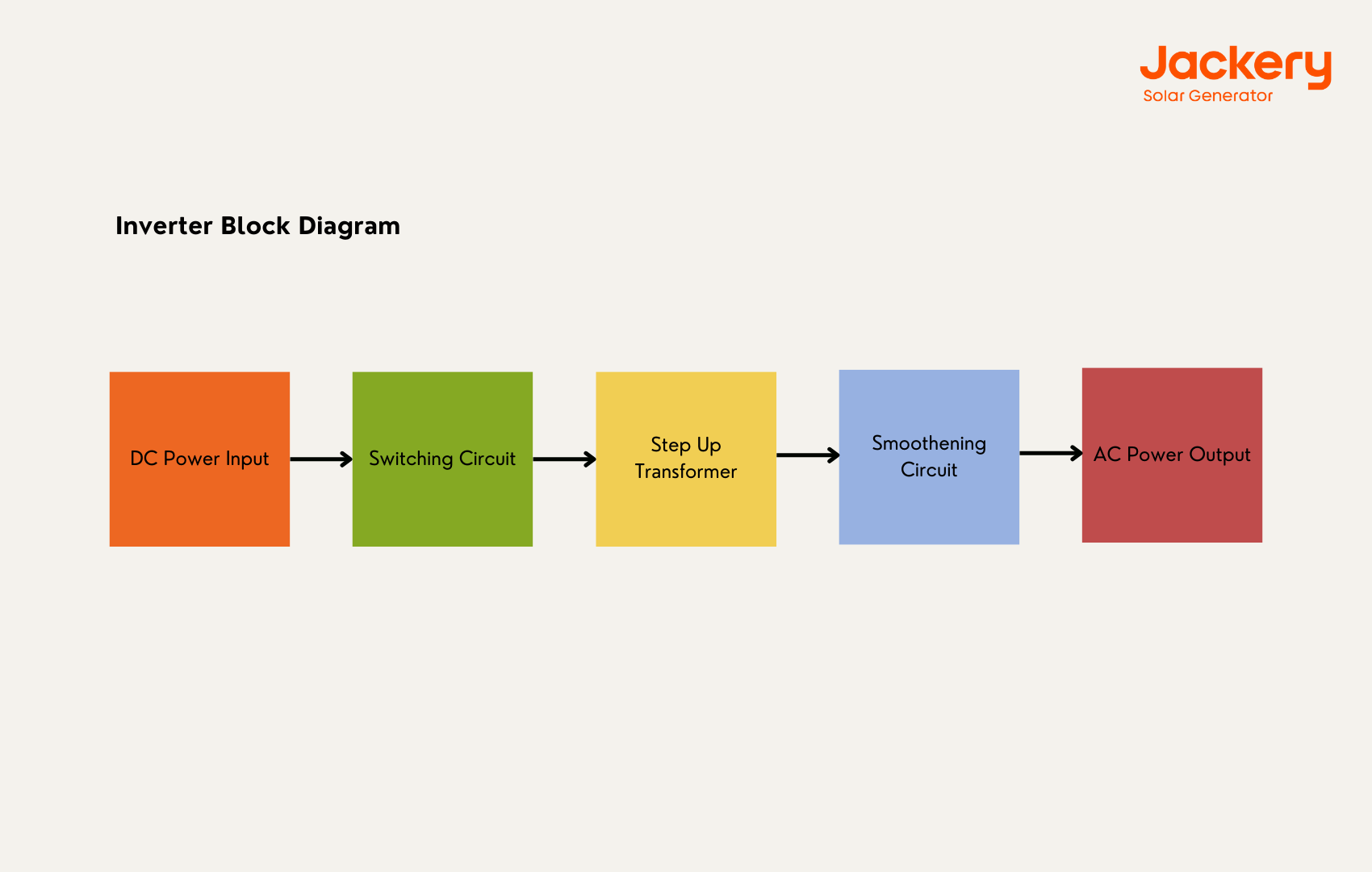
The design of the pure sine wave inverter determines the input voltage, frequency, output voltage, and overall power handling. It enables a dependable electricity supply for numerous gadgets even when they are not connected to the power grid. The three operational steps of a pure sine wave inverter are as follows:
Stage 1: Oscillator
In this stage, the pure sine wave inverter generates oscillating pulses via an IC circuit. These oscillations with a specific frequency generate alternate positive and negative voltage peaks. They could be more efficient and should never be used to power high-current output transformers. As a result, these pulses are transferred to the inverter's amplifier for the essential task.
Stage 2: Amplifier
During this phase, the amplified alternate voltage produced by the oscillator is further increased to high levels of electric current. Although amplified electricity is in AC form, the voltage remains at the battery supply level, insufficient to power an electrical item. The amplified voltage is transferred to the output transformer secondary winding to raise the voltage to levels suitable for electrical equipment.
Stage 3: Output Transfer
The magnetic induction of the transformer's two windings reduces or decreases the power supply to lower specified AC levels in an AC-to-DC transformer. A power inverter's transformer works similarly but in reverse. In the output transformer stage, low-level AC power from the inverter's amplifier stage is applied to the secondary windings of the transformer.
Pure Sine Wave Inverter VS. Modified Sine Wave Inverter
Power inverters of two sorts, pure sine wave inverters, and modified sine wave inverters, are used to convert DC to alternating current (AC). While both inverters serve the same function, significant variances suit them for different applications.
|
Inverter |
Pure Sine Wave Inverter |
Modified Sine Wave Inverter |
|
Waveform |
Smooth |
Stepped |
|
Efficiency |
High |
Low |
|
Noise Level |
Low |
High |
|
Solar Panel Compatibility |
High |
Low |
|
Appliances Compatibility |
High |
Low |
|
Costs |
High |
Low |
|
Lifespan |
Long |
Short |
Waveform
The most significant distinction is the waveform produced by pure sine wave inverters and modified sine wave inverters. Pure sine wave inverters provide a smooth, sinusoidal waveform similar to the waveform produced by the power grid. Modified sine wave inverters, on the contrary, give a stepped waveform that is not as smooth as a pure sine wave.
Efficiency
Because they convert DC power to AC power with little to no power loss, pure sine wave inverters are more effective than modified sine wave inverters. Modified sine wave inverters have a poorer conversion efficiency and can waste up to 20% of their power during conversion.
Noise Level
Modified sine wave inverters generate more noise and heat than pure sine wave inverters. A pure sine wave is preferred over the stepped waveform generated by modified sine wave inverters because its smooth waveform reduces electromagnetic interference. Unfortunately, the heat produced by modified sine wave inverters can harm and shorten the lifespan of electronic items.
Solar Panel Compatibility
Pure sine wave inverters are ideal for solar-powered systems since they are compatible with all solar panels. By contrast, modified sine wave inverters may not operate well with specific solar panels, such as thin-film panels.
Appliances Compatibility
All electronic devices, including sensitive ones such as medical equipment, home theater systems, and computers, are compatible with pure sine wave inverters. As a result, the best waveform for powering electronic equipment is a pure sine wave. It removes the possibility of harm or interference caused by modified sine wave inverters. Modified sine wave inverters can power sensitive equipment like tools, fans, and lights.
Costs
The only downside of a pure sine wave inverter is it is more expensive than modified sine wave inverters. They are more complicated and employ modern circuitry to produce a clean, smooth waveform. Because modified sine wave inverters are simple and use fewer components, they are less expensive.
Which One Is Better? And For You?
Consider your budget, device compatibility, inverter efficiency, and long-term use variables when purchasing a power inverter.
The first consideration is compatibility—your inverter should be able to power your gadget. A pure sine wave inverter can run rotational motors, such as power tools or electrical fans, heating components, microwaves, and high-precision devices, such as medical equipment.
How frequently will you use the inverter? Modified sine wave inverters can power most AC-powered devices. However, using it for extended periods can damage or limit the lifespan of more sensitive instruments.
Jackery Portable Power Stations are outfitted with superior-quality, long-lifespan, high-efficiency pure sine wave inverters to offer a satisfying indoor or outdoor charging experience. Please continue reading to find out more about our products!
Jackery Portable Power Stations with Pure Sine Wave Inverters
In terms of efficiency, pure sine wave inverters are always more efficient and generate little to no noise. It is critical if you want your devices and equipment to perform optimally. As a result, to achieve the stringent standards, we manufacture our solar solutions with the most efficient components available.

The Jackery Portable Power Station is a battery-powered pure sine wave inverter generator with DC and AC outputs and USB charging connections that can power most of your equipment, including your refrigerator, CPAP machine, microwave, and others. We give a suitable power source for your demands, whether you're planning camping trips, off-grid living, or home backup power supplies.
To completely utilize solar energy (Jackery Solar Generators), combine Portable Power Stations with Jackery Solar Panels. It only takes 60 seconds to connect them using solar cables and connectors. The monocrystalline solar cells ensure that more sunlight is absorbed and converted into electricity. The pure sine wave inverter transfers the DC to AC to maintain a continuous power supply.
Furthermore, Explorer Portable Power Stations include a pass-through capability that charges both the power station and your appliances at the same time.
|
Product |
Explorer 2000 Pro |
Explorer 1000 Pro |
|
Capacity |
2160Wh |
1002Wh |
|
Life Cycles |
1000 cycles to 80%+ capacity |
1000 cycles to 80%+ capacity |
|
Dimensions |
15.1 x 10.5 x 12.1in |
13.39x10.32x10.06in |
|
Using Temperature |
14-104F (-10-40℃) |
14-104F (-10-40℃) |
|
Recharging |
Solar Charging (6*SolarSaga 200W): 2.5H AC Adapter: 2H 12V Car Adapter: 24H |
Solar Charging (4*SolarSaga 200W): 1.8H AC Adapter: 1.8H 12V Car Adapter: 12H |
|
Output Ports |
3*AC Output: 120V, 60Hz, 2,200W (4,400W Peak); 3*USB-A: Quick Charge 3.0, 18W Max; 3*USB-C: 100W Max, (5V, 9V, 12V, 15V, 20V up to 5A); 1*Carport: 12V⎓10A |
3*AC Output: 120V, 60Hz, 1000W (2000W Peak); 2*USB-A: Quick Charge 3.0x2, 18W Max; 2*USB-C: 100W Max, (5V, 9V, 12V, 15V, 20V up to 5A); 1*Carport: 12V⎓10A |
|
Working Hours |
Refrigerator(520W): 3.3H TV(60W): 28.8H Heater(1800W): 1H Microwave(960W): 1.8H Grill(850W): 2H Coffee Maker(500W): 3.5H Light(5W): 345.6H |
Refrigerator(520W): 1.5H TV(60W): 13.4H Heater(1800W): 0.5H Microwave(960W): 0.8H Grill(850W): 0.9H Coffee Maker(500W): 1.6H Light(5W): 160.3H |
Jackery Explorer 2000 Pro Portable Power Station
With a battery capacity of 2160Wh and an output power of 2200W, the Jackery Explorer 2000 Pro portable power station can power several devices simultaneously. Explorer 2000 Pro meets all your power needs during outdoor activities and interruptions. It can, for example, charge a 520W refrigerator for 3.3 hours and a 960W microwave for 1.8 hours.
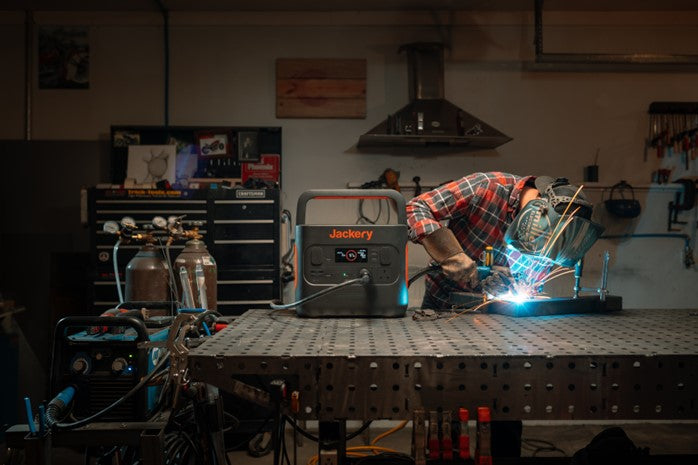
The Explorer 2000 Pro boasts many unique features, including quick charging in 2 hours through AC input, all-around safety with industry-leading BMS, a pure sine wave inverter, and an intelligent, bright screen that ensures high-quality user experience. It can be fully recharged in 2.5 hours using 6* SolarSaga 200W solar panels, 2 hours using an AC wall outlet, and 4 hours using a carport.
The Jackery Explorer 2000 Pro has a lifespan of up to ten years. It can be left on standby with 100% capacity for over 365 days, making it a dependable emergency backup power supply. The Explorer 2000 Pro power station weighs 53 pounds and has a foldable handle design for a pleasant on-the-go experience. Outstanding outside charging experience becomes a reality in seconds with the easy push of a button.
Jackery Explorer 1000 Pro Portable Power Station
The Jackery Explorer 1000 Pro Portable Power Station has a battery capacity 1002Wh and can charge up to 90% of your electrical equipment while camping, RVing, or during power outages. For example, it can power a 60W TV for 13.4 hours and a 5W light bulb for 160.3 hours, which is suitable for residential use.
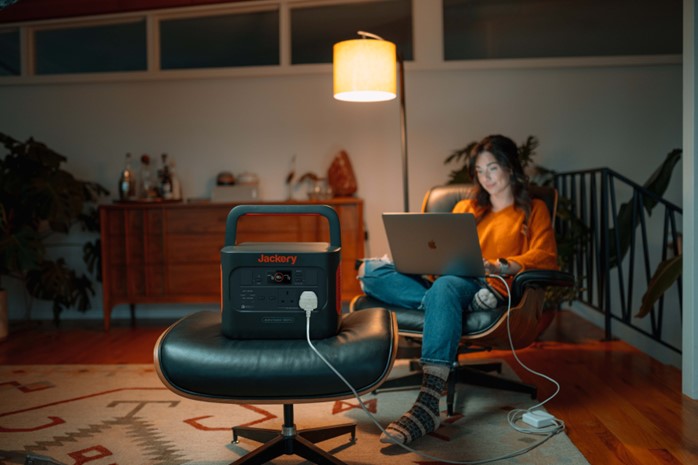
The Explorer 1000 Pro also includes industry-leading BMS, pure sine wave technology, 94V-0 fire-grade material, level 9 shock-resistant design, and 12 layers of protection while weighing only 25.4 lbs. The Explorer 1000 Pro supports wall, carport, and solar charging and can be fully charged in 1.8 hours via wall charging.
Even after 1000 charging cycles, the proprietary recharging algorithm maintains 80% battery capacity. You may take the Explorer 1000 Pro camping every week for ten years before it hits its maximum capacity of 80%. Furthermore, with 100% capacity, it may be left on standby for over 365 days, making it an incredibly dependable emergency backup power supply.
How to Choose The Best Pure Sine Wave Inverter?
DC can be converted to AC using a pure sine wave inverter. Unlike square wave and modified sine wave inverters, pure sine wave inverters generate waveforms comparable to those produced by commercial grid systems. They may power a wide range of electronic devices, including inductive loads. So, how do you go about selecting a pure sine wave inverter? We recommend that you evaluate the following five critical factors:
Inverter Output: The inverter's output power should be larger than the total power ratings of the appliances you need to run concurrently. As a result, first, evaluate your appliance's power requirements. After determining the power requirement, assign an expansion value to the inverter.
Battery Voltage: In addition to overall output power, battery voltage must be considered. If the battery voltage is 24 volts, use a pure sine inverter with the same voltage.
Efficiency: Pure sine inverters are available in various capacities and efficiencies. The efficiency of the inverter is a critical component that should be considered. Conversion from DC to AC typically produces heat and results in losses.
Price: Pure sine wave inverters range from a few hundred to a few thousand dollars. The most costly inverter is not always appropriate, and the cheapest is not always the most cost-effective. You should assess your needs first, followed by the price.
Running Time: The inverter's run time is how long it can operate, mainly determined by the battery's capacity (in Ah) and the overall power required to run the item. Check that the battery has adequate power for the inverter and electrical equipment.
What Appliances Can Pure Sine Wave Inverter Run?
Pure sine wave inverters produce clean, dependable electricity of the same quality as your utility grid. They attain this high quality using high-end electrical components instead of modified sine wave inverters, which use low-cost electronics.
Consequently, the cost of a pure sine wave inverter can be twice as high as that of a modified sine wave inverter, given an equivalent wattage output. It is important to note that pure sine wave inverters can effectively protect equipment and prolong its lifespan. Furthermore, due to its excellent efficiency (+90%), a pure sine wave inverter will save you energy.
Almost all appliances and electronic devices require a high-quality pure sine wave inverter. Furthermore, as many solar installations do, you must have a perfect sine wave if you link your inverter to the grid. Using a pure sine wave inverter, your appliances will work as smoothly as if connected to the electric grid.
- High-End Appliances: LED TV, radio, computer;
- Medical Machines: CPAP machine, health monitor, oxygen saturation monitor;
- Heating Devices: microwaves, oven;
- Rotary Motors: electric fan, refrigerator, power tools.
Final Thoughts
Utilizing a pure sine wave inverter ensures reliable power conversion, especially when dealing with sensitive electronic devices. It provides clean and consistent power output, assuring optimal device performance and lifetime. When selecting the best pure sine wave inverter, consider its efficiency, run time, output, and battery voltage. Alternatively, you can get a Jackery Portable Power Station to charge all of your appliances with solar energy smoothly and safely.



